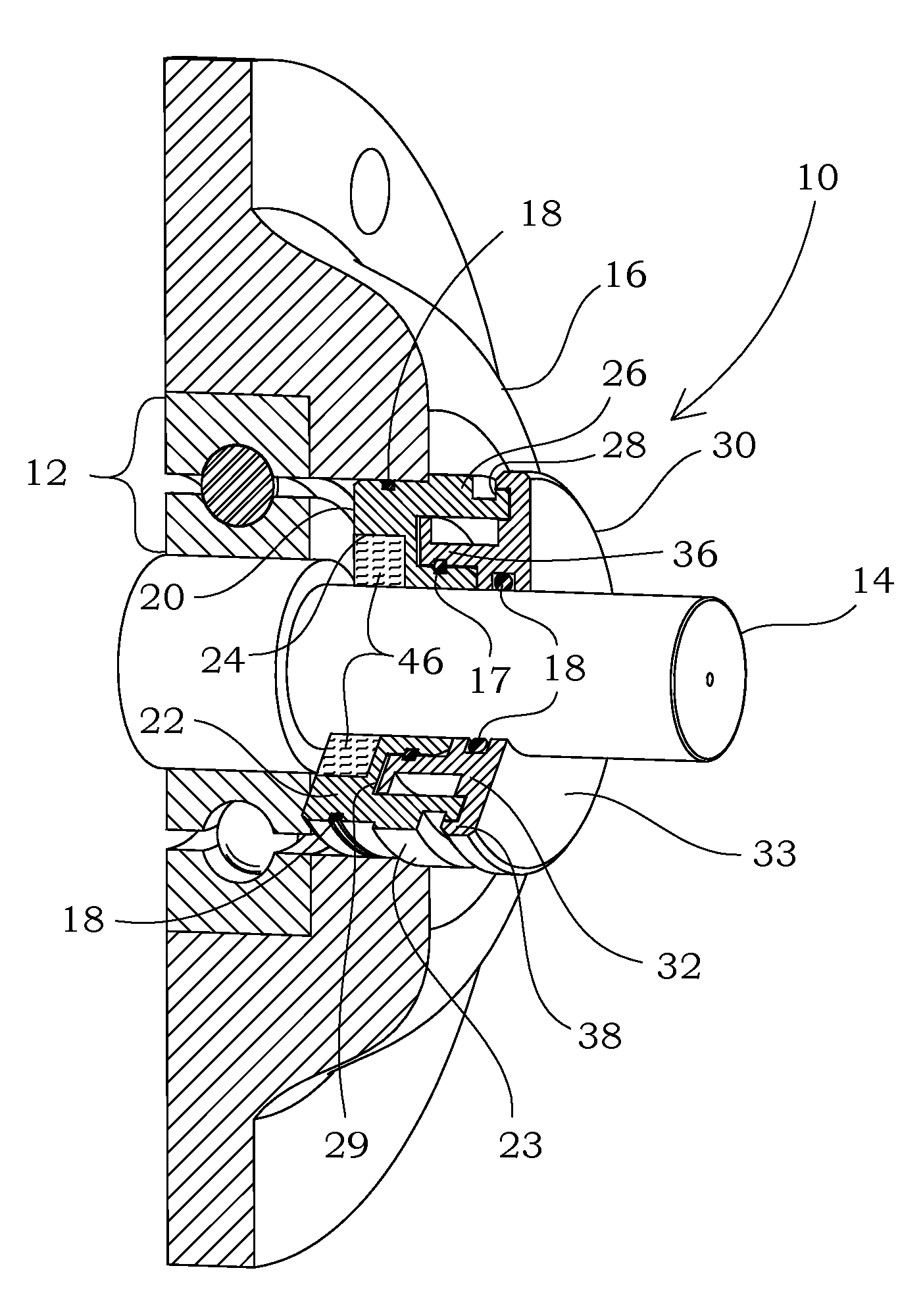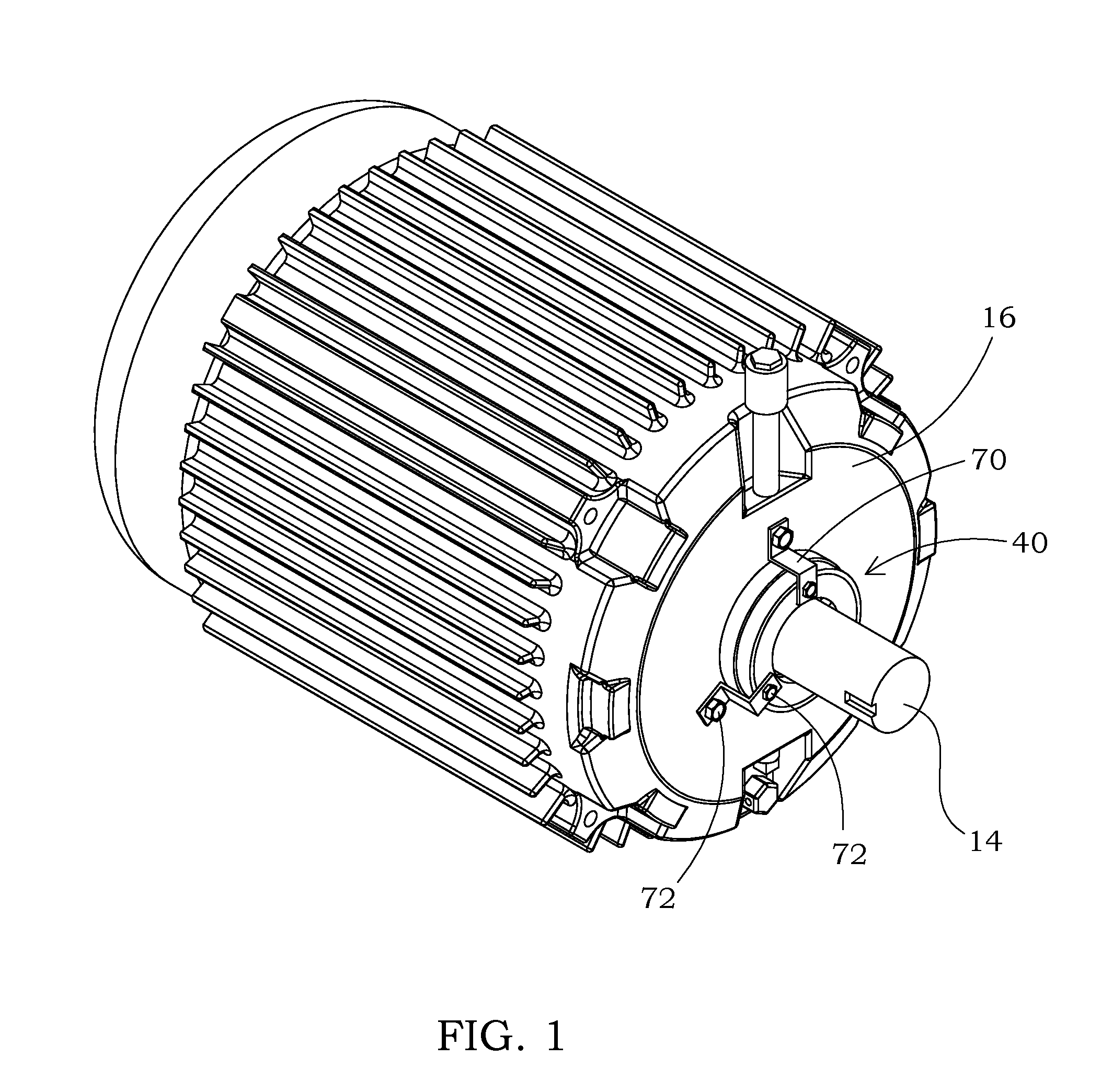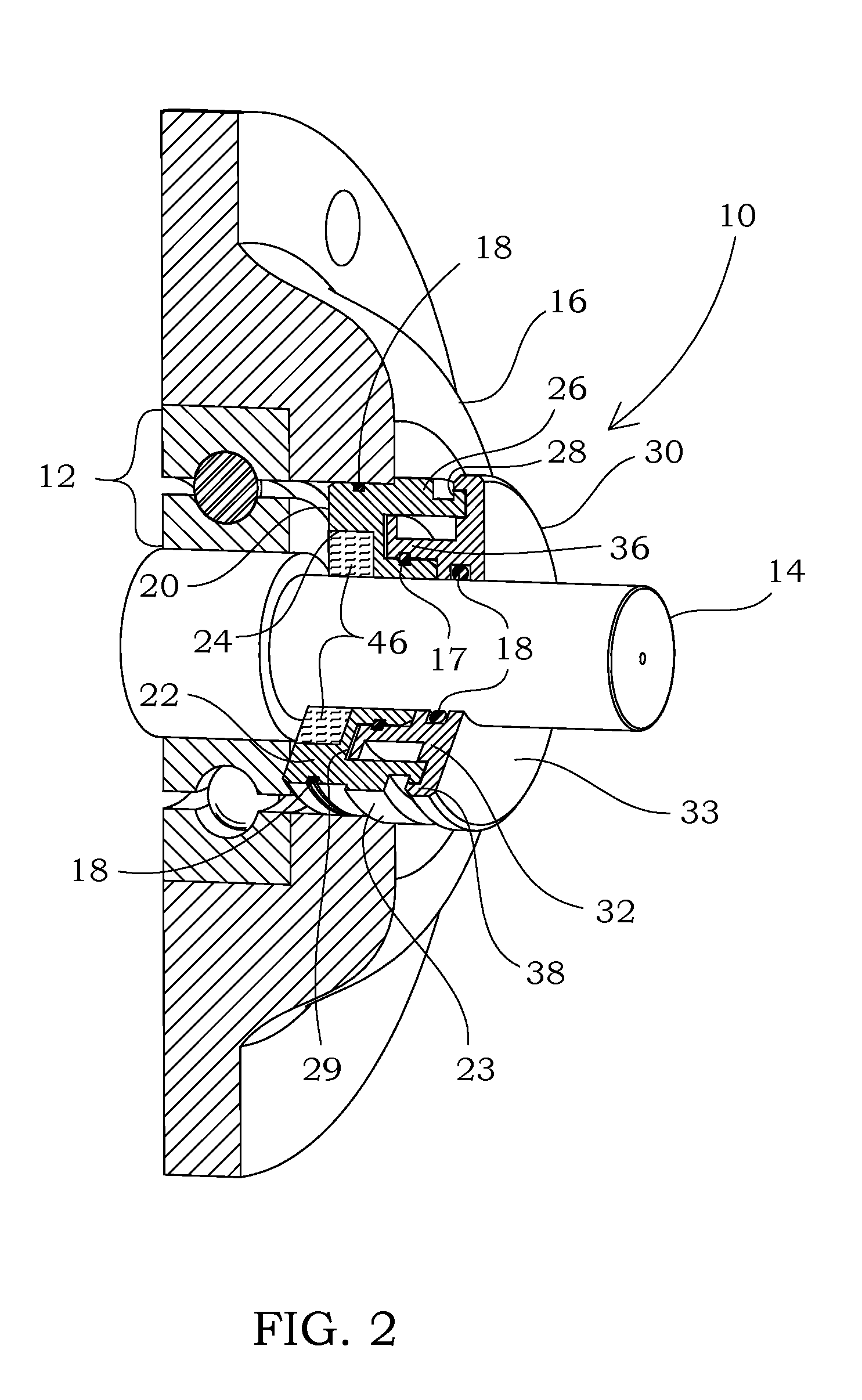Current Diverter Ring
a current diverter and ring technology, applied in the direction of bearing assembly, dynamo-electric components, mechanical equipment, etc., can solve the problems of affecting the operation of the electric motor, the failure of the bearing and the damage of the electrical motor using variable frequency drives, and the inability to maintain the rotating equipment in a timely manner. to achieve the effect of preventing the leakage of lubrican
- Summary
- Abstract
- Description
- Claims
- Application Information
AI Technical Summary
Benefits of technology
Problems solved by technology
Method used
Image
Examples
Embodiment Construction
—ELEMENT LISTING
[0041]
DescriptionElement No.Bearing isolator10Bearing12Shaft14Motor housing16Sealing member17O-ring18Stator20Stator main body22Stator radial exterior surface23Receptor groove24Conductive segment annular channel25Stator axial projection26Stator radial projection28Stator axial groove29Rotor30Rotor main body32Rotor axial exterior surface33First axial interface gap34aFirst radial interface gap34bRotor axial projection36Rotor radial projection38Rotor axial groove39Current diverter ring ™ (CDR ®)40CDR body41Annular channel42First wall43Second wall44CDR radial exterior surface45Conductive segment46CDR main aperture48Inner body50Radial channel52Catch52aMounting aperture54Ridge (locking)56Inner body main aperture58Outer body60Base62Annular groove64First annular shoulder65aSecond annular shoulder65bRadial projection66Outer body main aperture68Strap70Fastener72
DETAILED DESCRIPTION
[0042]Before the various embodiments of the present invention are explained in detail, it is to be ...
PUM
 Login to View More
Login to View More Abstract
Description
Claims
Application Information
 Login to View More
Login to View More - R&D
- Intellectual Property
- Life Sciences
- Materials
- Tech Scout
- Unparalleled Data Quality
- Higher Quality Content
- 60% Fewer Hallucinations
Browse by: Latest US Patents, China's latest patents, Technical Efficacy Thesaurus, Application Domain, Technology Topic, Popular Technical Reports.
© 2025 PatSnap. All rights reserved.Legal|Privacy policy|Modern Slavery Act Transparency Statement|Sitemap|About US| Contact US: help@patsnap.com



